Costa Blanca is very popular with Europeans and completely undervalued by Russians. It closely adjoins the Costa Dorada, but the prices here are lower, the public is smaller, and the sun and beaches awarded the Blue Flag are larger.
Contents
- Valencia
- How to get to Valencia
- Where to stay in Valencia
- Transport Valencia
- Valencia's kitchen
- What to see in Valencia
- Cathedral of the Virgin Mary
- Silk Exchange
- Fine Arts Museum
- National Museum of Ceramics
- St. Virgin Square
- Towers Serranos
- Districtdel Carmen
- Embankment of Valencia
- Central market of Valencia
- City of Arts and Sciences
- River bed of Turia
- Biopark of Valencia
- NightclubLas Animas Puerto
- Natural Park Albufera
- Costa Blanca resort
- Alicante
- Benidorm
- Park Terra Mitica
- Aqualandia and Mundomar
- Aqua Natura water park and zoo Terra Natura
- Safari Park Aitana
- Castle Count Alfassa
- Guadalest
- Torrevieja
- Gandia
- Denia
- Altea
- Calpe
- Javea
- Villajoyosa
- Video. Costa Blanca( Official promo turismo)
- Video. Mini-film about the Costa Blanca in Russian
- Video. Street musicians of Valencia( medieval Spanish music)
- Video. La Valencia - traditional dance of Valencia
Valencia
Valencia is the capital of the Spanish province of Valencia and the third most important city in Spain. It is not as crowded as Barcelona, but no less attractive historically and culturally. The resort towns of the region are famous for their excellent beaches, rich history and developed infrastructure for recreation. This region is chosen by tourists who prefer a measured independent rest.
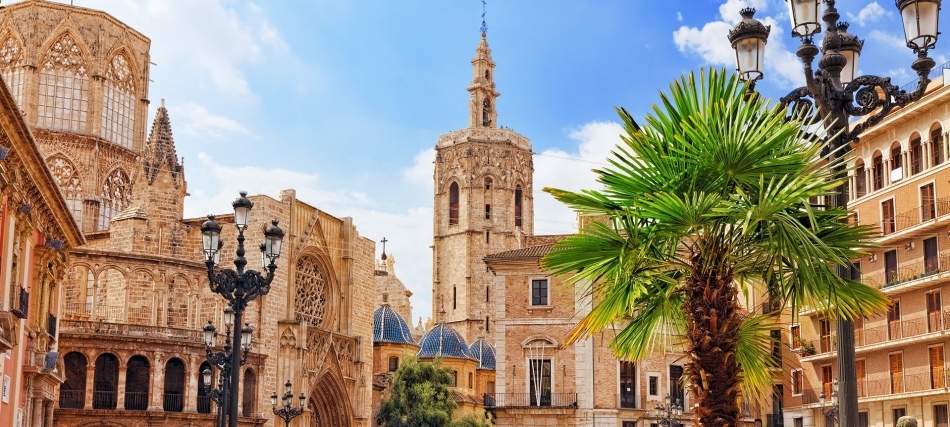
How to get to Valencia
Unfortunately, from Russia to Valencia you can fly only with a transfer in other European cities( Istanbul, Madrid, Munich, etc.).The nearest international airport to Valencia, which has regular communication with Russia, is Barcelona, from which you can get to Valencia by high-speed train in 3 hours.
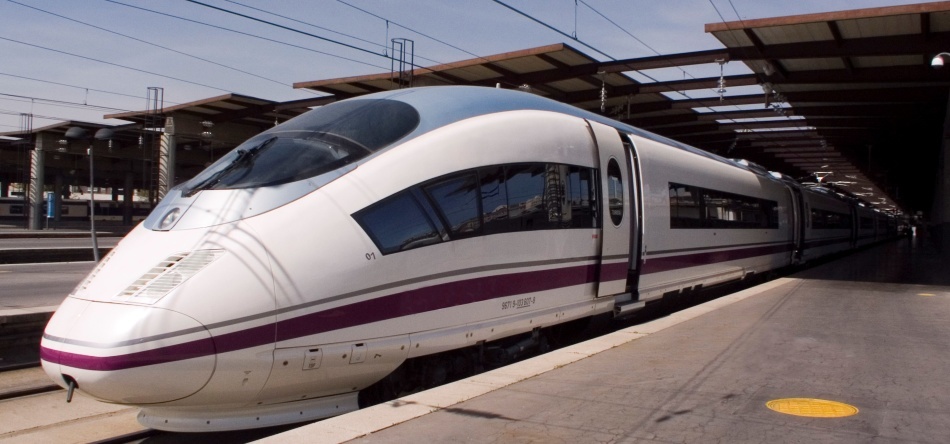
In summer some Russian airlines carry out charter flights to Alicante, but the prices for air tickets can not be called even average. With the European countries, Valencia is also connected by bus and rail.
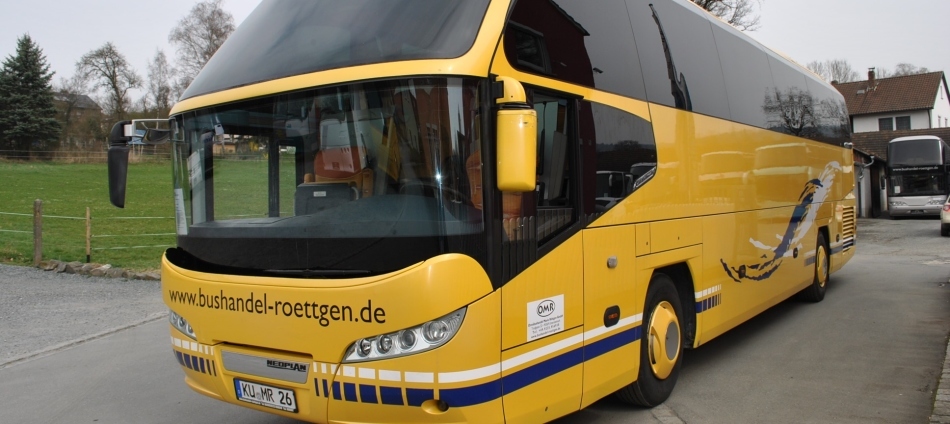
Where to stay in Valencia
Accommodation options in Valencia are many - from hotels to beds in private apartments and hostels. The choice of housing depends only on your wallet. If you want to combine beach holidays with an active excursion, boldly stop right in the city. Despite the fact that Valencia is a metropolis, the beaches here are no worse than the beaches of the rest of the coast of Costa Blanca, and you can reach them from the center by city transport in only 30-40 minutes. Prices for a two-room apartment in the center start from 450 euros per month for the whole object.

Transportation Valencia
In Valencia you can travel by metro, tram or city bus. The metro is small, consists of only five lines, it works from 5:00 am to 02:00 am. It is noteworthy that in Valencia the trams are subordinated to the management of the underground, and tram lines are included in the subway scheme.
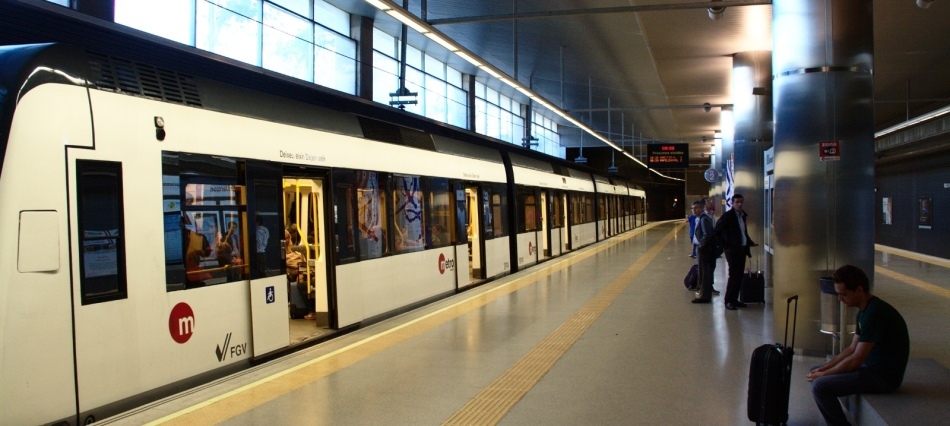
The movement interval is quite large: from 4.5 minutes per hour to peak to 7.5 minutes at the usual time. The most profitable type of tickets: for 10 trips or a pass for 24 hours.
More information about the metro of Valencia can be found here
Buses in Valencia are day, night and excursion, most of the routes run from 04:00 am to 02:00 am, with a 4 to 12 minute interval( at night to 30 minutes).Tickets are sold at tobacco stalls and the bus driver( the entrance to the bus is only through the front door).The most advantageous tariff for buses is for 10 trips.
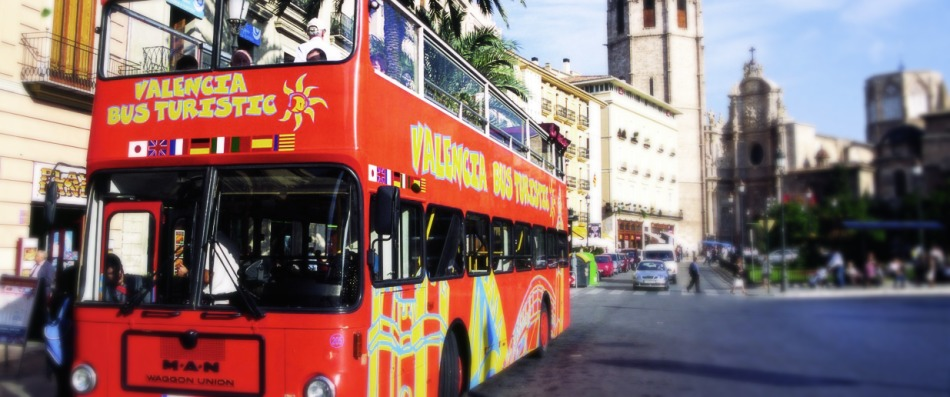
Valencia's cuisine
The most traditional dishes of Valencia, which are worth a try in the city or in the resorts of Costa Blanca:
- Paella( rice with seafood or meat)
- Tapas( snacks from all sorts of bread or skewers)
- Fideua( seafood with noodles,spiced with spaghetti)
- Tortilla( scrambled eggs with potatoes and various meat or seafood additives)
- Pikat( meat stewed with vegetables, peas chickpeas and crushed wheat)
- Orchata( a drink made from ground almonds that resembles sweet milk)
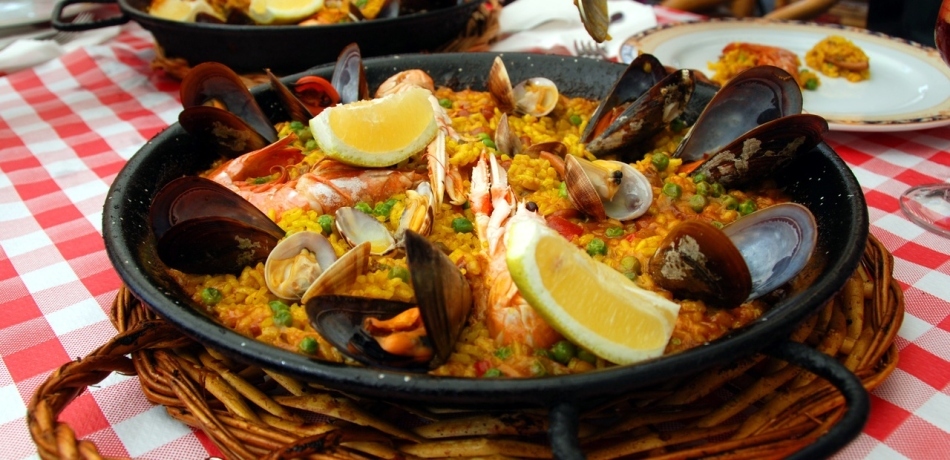
What to see in Valencia
The Cathedral of the Virgin Mary
The Cathedral of the Virgin Mary in Valencia( Catedral de Santa María de Valencia) is best known in the Christian world as a place to store the greatest Christian shrine - the Holy Grail - the cup from which Christ drank wine duringThe Last Supper. In addition, the cathedral is of great architectural value, since for its centuries-old history it has undergone numerous alterations, so that in the modern appearance of the cathedral there is a combination of different styles and epochs.
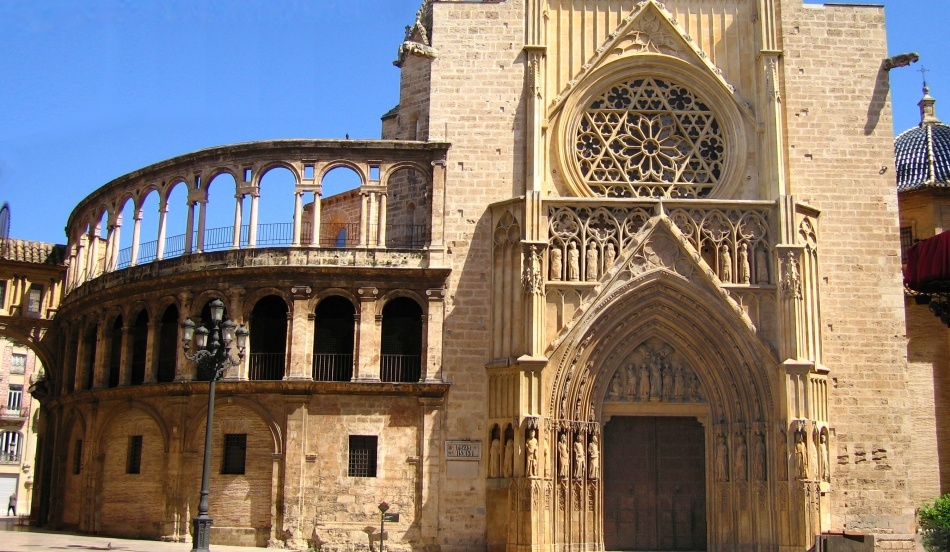 Catedral de Santa María de Valencia
Catedral de Santa María de Valencia Silk Exchange
Silk Exchange of Lonja de la Seda is a UNESCO World Heritage Site and is a complex of buildings in a characteristic medieval style. The stock exchange was built in the XV-XVI centuries and was intended for trade in silks, which were famous for local artisans. In addition to the trading hall on the territory of the stock exchange there was a prison for kidnappers of silks and debtors, a chapel with a chapel, an orange courtyard for rest. The trading floor is laid out on the floor of the trading hall in mosaic in Latin.
 Silk Exchange of Lonja de la Seda
Silk Exchange of Lonja de la Seda Fine Arts Museum
The Museo de Bellas Artes de Valencia is housed in a former theological seminary. Here you can find works by Spanish artists from different eras, including masterpieces by Goya, Velasquez and El Greco. Also here there is an archaeological exposition and a collection of objects representing the way of life, traditions and culture of local residents for many centuries.
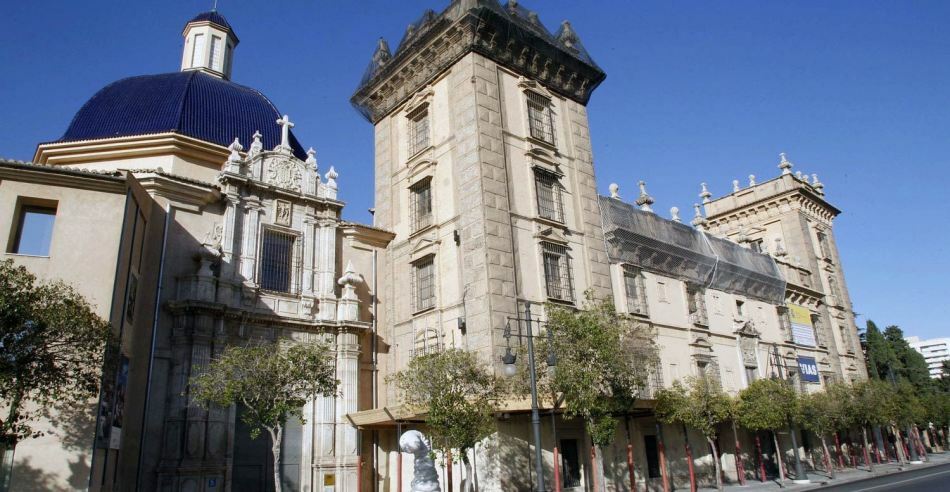 The Museo de Bellas Artes de Valencia
The Museo de Bellas Artes de Valencia The National Museum of Ceramics
The National Museum of Ceramics( Museo Nacional de Cerámica y de las Artes Suntuarias) is located in the center of the city in the luxurious residence of the family of de dos Aguas. Most of the exposition items are privately owned. Here you can see unique specimens of ceramics from different epochs from different parts of the world. In addition to ceramics, the museum exhibits samples of luxury collection furniture of the past centuries, as well as other household items and works of art.
 The National Museum of Ceramics( Museo Nacional de Cerámica y de las Artes Suntuarias)
The National Museum of Ceramics( Museo Nacional de Cerámica y de las Artes Suntuarias) St. Virgin Square
The Plaza de la Virgen is the historic heart of Valencia. During the Roman rule in the square was a forum, during the time of Muslim rule here was the center of the capital of the Arab state. On the square are the Cathedral of Valencia, the Church of the Holy Virgin of the Les Miserables and the building of the Generalitat - the Government of Valencia. The square is a favorite place for locals for romantic dates and friendly meetings.
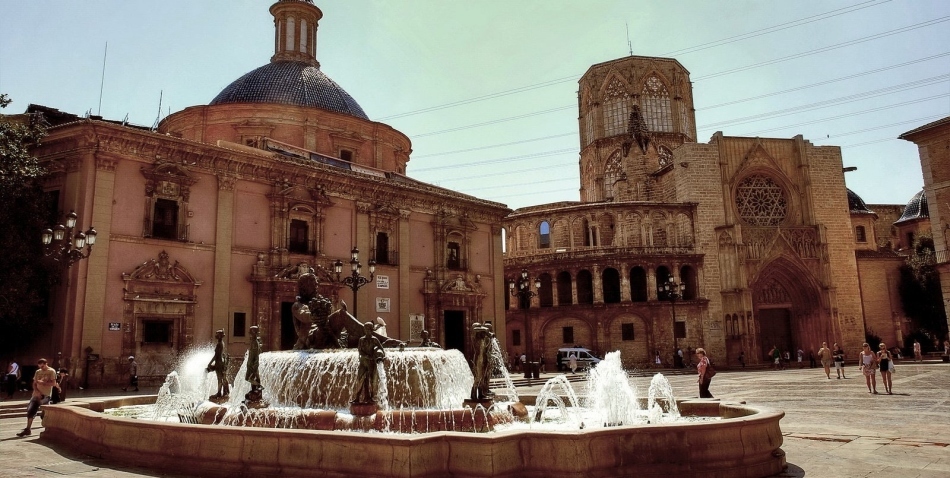 Square of the Virgin( Plaza de la Virgen), Valencia
Square of the Virgin( Plaza de la Virgen), Valencia Towers Serranos
Towers Serranos( Torres de Serranos) are the remnants of the walls of medieval Valencia with triumphal gates to enter the city, built in the late 14th century. They served as protection against the enemy's attacks from the outside, as well as a place for solemn ceremonies and announcements to the population of royal decrees. In the XVI-XVII centuries the towers served as a city prison, during the civil war of 1936 in the dungeon of the towers the most valuable museum exhibits of Valencia and other regions of Spain were kept from bombing. Today in the towers there are expositions of the naval museum, and on the top of the towers there is an observation deck for tourists.
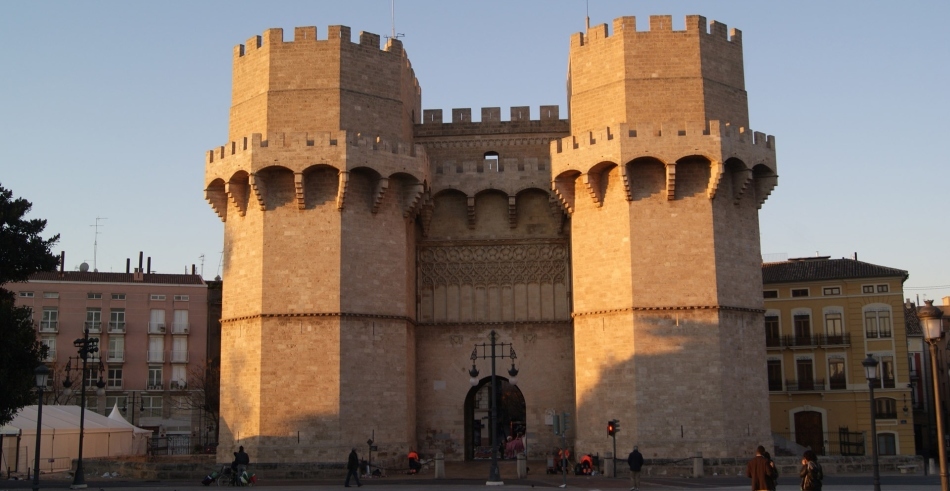 Towers Serranos( Torres de Serranos), Valencia
Towers Serranos( Torres de Serranos), Valencia Area del Carmen
Area del Carmen( ) is the main party place in the city. The walls here are painted with graffiti and other samples of street art, in the evenings many nightclubs and establishments of very different musical orientations are opened - from traditional salsa and flamenco to super-trendy trends. Often dance floors are arranged in the open air.
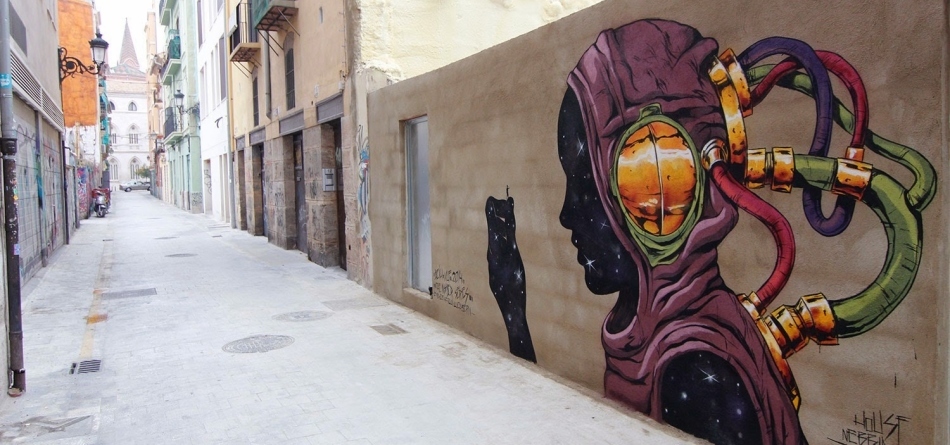 Area of Carmen( Barrio del Carmen), Valencia
Area of Carmen( Barrio del Carmen), Valencia Embankment of Valencia
Promenade promenade( Paseo Marítimo) separates the city beaches of Valencia from residential buildings. This is the most suitable place for evening and night walks. From here you can see a picturesque view of the city, drowning in night lights. On the beaches there are many nightclubs and bars, often performers of salsa and trendy modern dance trends. Nightlife on the waterfront does not subside in the summer until the morning.
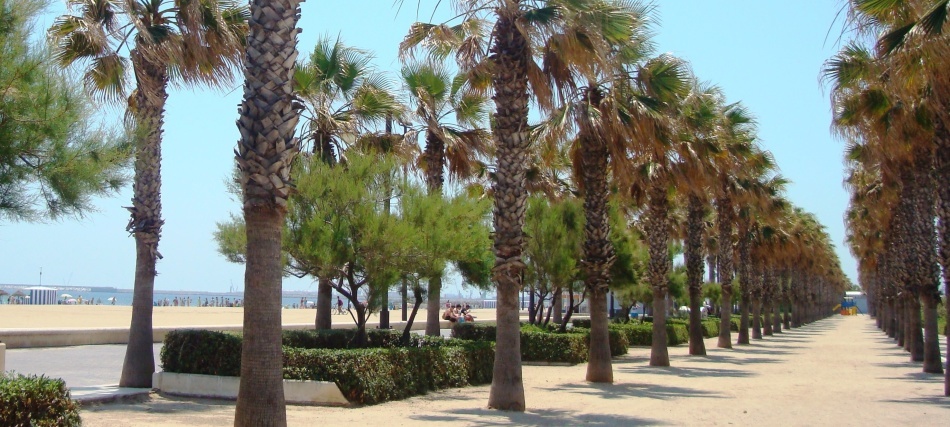 Promenade Quay( Paseo Marítimo), Valencia
Promenade Quay( Paseo Marítimo), Valencia Central Market of Valencia
Central Market of Valencia( Mercado Central de Valencia) is the largest food market in Europe where you can buy the freshest products of local farmers at very reasonable prices, as well as products brought for sale fromthe whole of Spain. All types of meat products are sold here, especially the various varieties of jamon;in the fish ranks you can find the most exotic reptiles, which you will immediately cook in the numerous fish restaurants around the market;you can buy ready-made meals and samples of traditional Valencian cooking.
 Central Market of Valencia( ASIA)
Central Market of Valencia( ASIA) City of Arts and Sciences
City of Arts and Sciences( Ciudad de las Artes y de las Ciencias) is truly a city in the city - a unique huge complex that includes the Palace of Arts, the Museum of Science, oceanarium, planetarium and greenhouse gallery
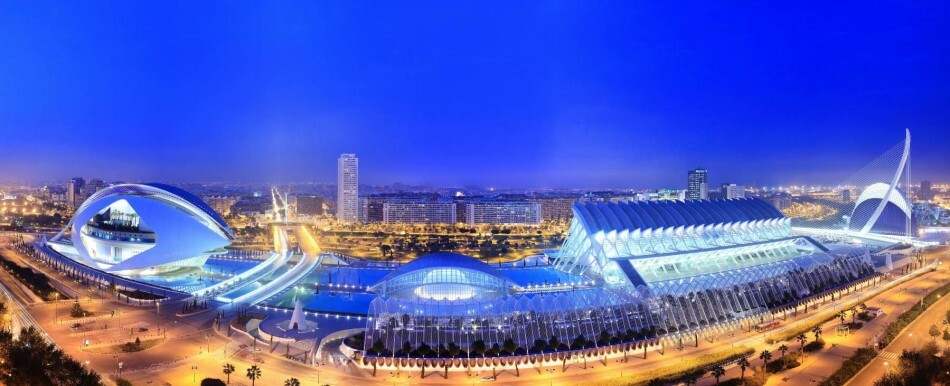 City of Arts and Sciences( Ciudad de las Artes y de las Ciencias), Valencia
City of Arts and Sciences( Ciudad de las Artes y de las Ciencias), Valencia The Museu de les Ciències Príncipe Felipe is a unique interactive museum, striking in its dimensions andquaint buildings. The museum in an accessible form demonstrates the action of the laws of physics, talks about the structure of the human body and explains the essence of natural phenomena.
 The Museu de les Ciències Principe Felipe, Valencia
The Museu de les Ciències Principe Felipe, Valencia The giant DNA molecule, the most modern space simulators, the whole exhibition of the most interesting chemical compounds, the real incubator where you can observe the process of the appearance of a live chick from an egg, and muchother. Most of the exhibits here are intended for use by visitors as tools for various curious experiences. The museum will be interesting even to those who are far from the natural sciences and do not understand anything about them.
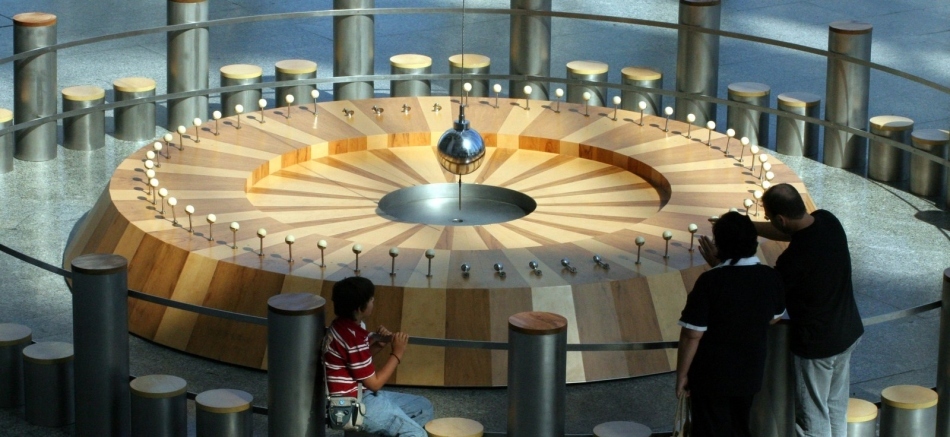 The Museu de les Ciències Príncipe Felipe, Valencia
The Museu de les Ciències Príncipe Felipe, Valencia The L'Oceanografic Valencia is the largest aquarium in Europe, representing aquatic ecosystems all over the world. The aquarium is divided into as many as 10 zones, representing different types of water bodies from arctic to tropical latitudes, including mangrove creeks, polar seas and unique fauna of the Red Sea. For fans of extreme sports, the aquarium offers a unique attraction: swimming in the pool with real sharks.
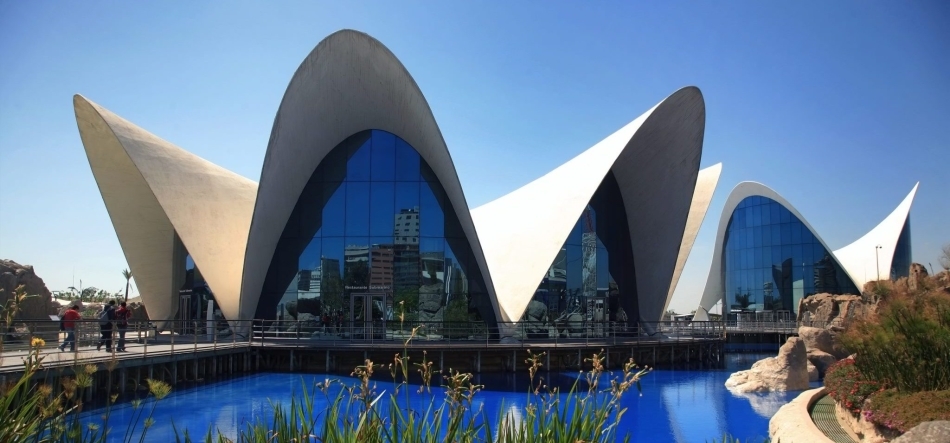 The Valencian Oceanarium( L'Oceanografic Valencia)
The Valencian Oceanarium( L'Oceanografic Valencia) Gallery-greenhouse( L'Umbracle) is a long open pavilion in which the plants typical of the Valencia region are presented. On the entire length of the pavilion a pedestrian walkway is laid, which is in shadow even on the hottest day. Despite the fact that the gallery is open, the air here is filled with the aromas of essential oils of surrounding plants.
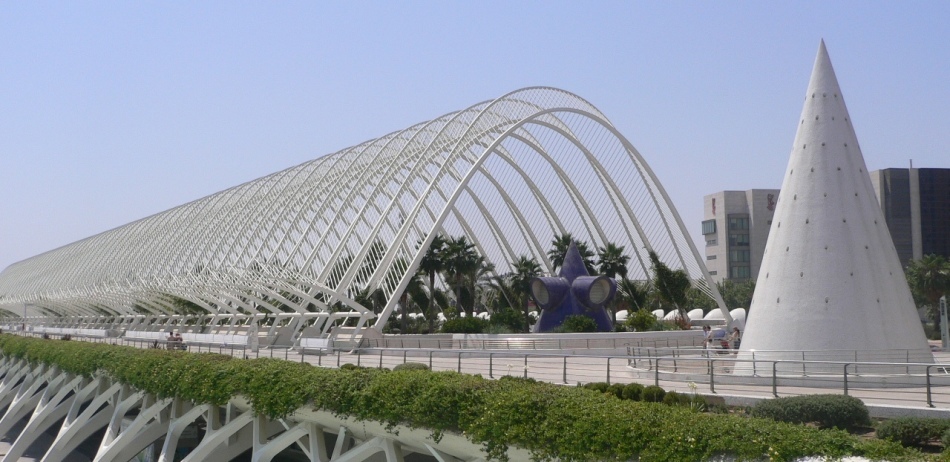 Gallery-greenhouse( L'Umbracle), Valencia
Gallery-greenhouse( L'Umbracle), Valencia Palace of Arts of Queen Sofia( El Palau de les Arts Reina Sofía) .The museum building is a visiting card of Valencia and often its photo is printed on the title pages of booklets and guidebooks. Interior decoration and architecture of the palace is not inferior in originality to its appearance.
 The Palace of the Arts of Queen Sofia( El Palau de les Arts Reina Sofía), Valencia
The Palace of the Arts of Queen Sofia( El Palau de les Arts Reina Sofía), Valencia The Concert Hall of the Palace is equipped with the latest technology( for example, in the seats of the auditorium there are electronic displays where the libretto is broadcast in several languages during opera performances).The Palace of Arts can be visited with an ordinary tour apart from concert events.
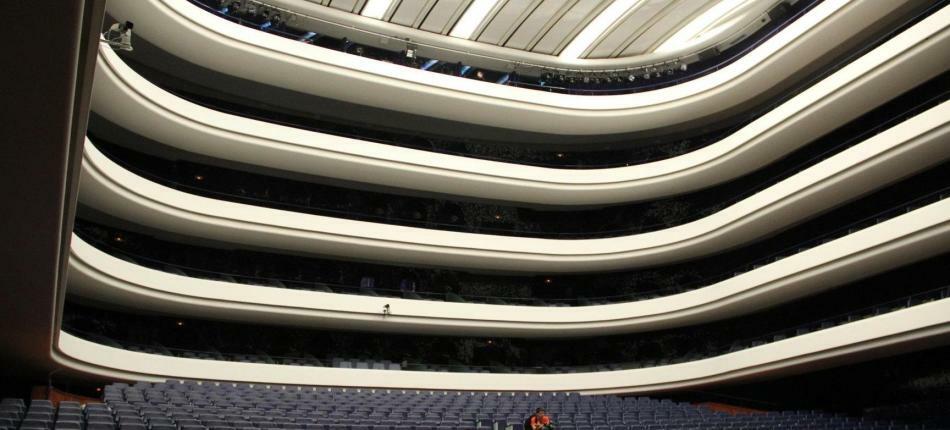 Concert Hall of the Palais de les Arts Reina Sofía
Concert Hall of the Palais de les Arts Reina Sofía Planetarium( L'Hemisfèric) is the most modern planetarium equipped with expensive equipment, and in addition it is a 3D cinema, on the screen of which scientific-cognitive films of the mostdifferent subjects, and a unique modern laser installation that broadcasts whole performances in the form of a projection.
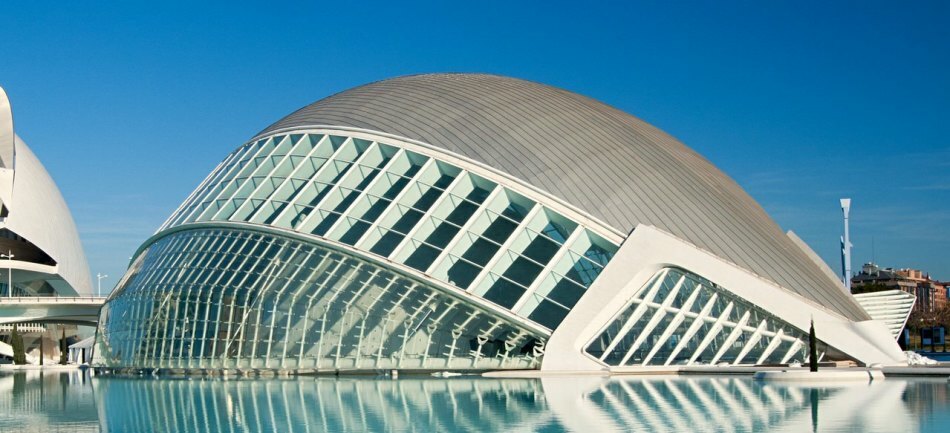 Planetarium( L'Hemisfèric), Valencia
Planetarium( L'Hemisfèric), Valencia Turia river bed
Turia( Río Turia) is a dried up river passing through the center of the city, the riverbed and banks of which have now turned into a solid green park area. Here are the Royal Gardens and Gulliver's Park, as well as many small parks, playgrounds and walking lanes. The City of Arts and Sciences is also located in the riverbed of the Turia River.
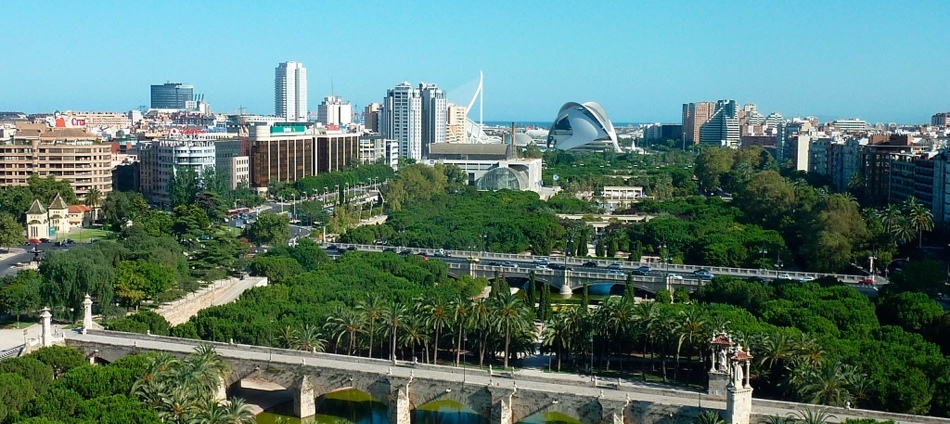 Dry river bed of the Turia( Río Turia), Valencia
Dry river bed of the Turia( Río Turia), Valencia Biopark Valencia
Bioparc Valencia is a zoo that does not resemble any other zoo in the world. There are no cells and lattices, and park scenery recreates in every detail the natural habitat of each animal. Aviary aviaries are separated from visitors by reliable ditches and barriers, disguised as a natural landscape. Animals that do not pose a danger to humans can be seen from the distance of the outstretched arm. The fauna of Africa and South-East Asia is mainly represented here.
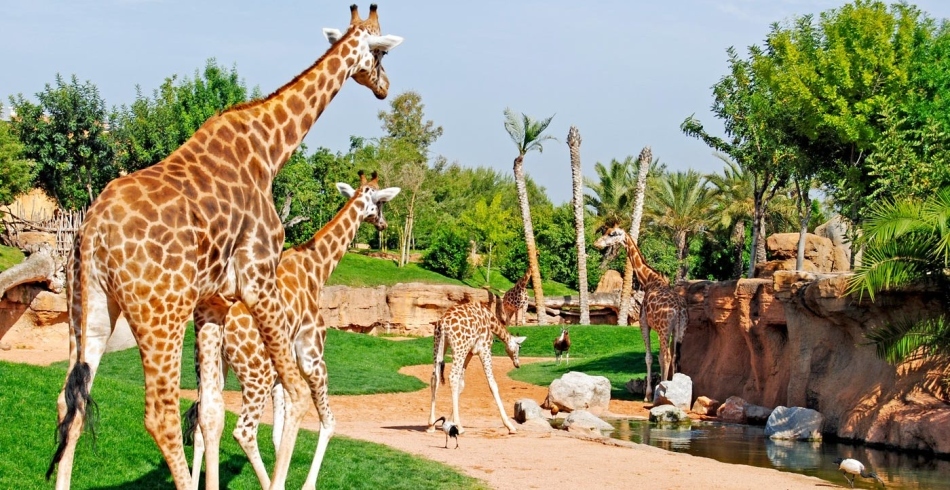 Bioparc Valencia
Bioparc Valencia Nightclub Las Animas Puerto
The Las Animas Puerto nightclub is located on the waterfront near the port and is very popular with young people all over the coast. Here the most fashionable night parties are held in the open air, there are two huge dance floors, each with a capacity of up to 3000 people, and a bar and restaurant.
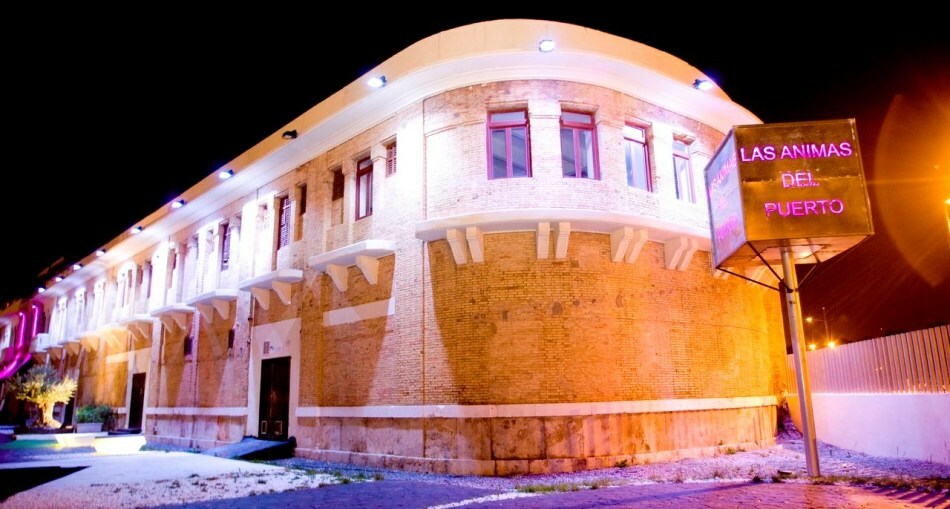 Nightclub Las Animas Puerto, Valencia
Nightclub Las Animas Puerto, Valencia Nature park of Albufera
Nature park of Albufera is a closed reserve in which rare species of birds live. The park will be interesting for those who are fond of flora and fauna, as well as connoisseurs of real local cuisine and natural beauties.
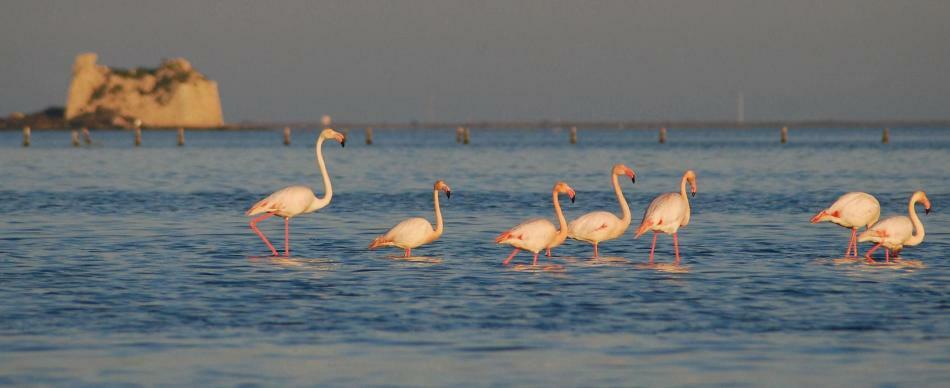 Parque natural de la Albufera, Valencia
Parque natural de la Albufera, Valencia Resorts Costa Blanca
Costa Blanca - the resort area of the Valencia region - is translated from Spanish as a "white shore".The coast is famous for its long sandy beaches, ancient medieval towns and fortresses, a wonderful climate( even in winter the temperature seldom drops below 19 degrees Celsius) and hospitable inhabitants.
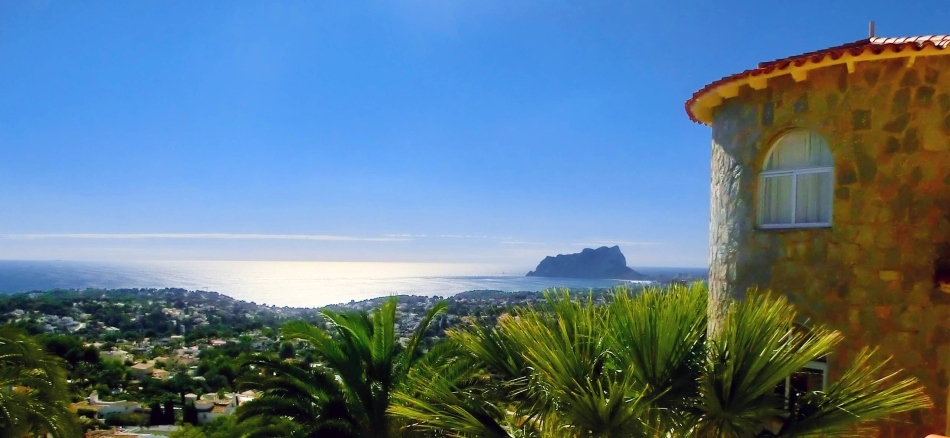 Alicante
Alicante
Alicante is rightfully considered to be the capital of the Costa Blanca beach. There are many open squares and wide streets, long, flat beaches, and in general the city gives the impression of a very open and bright space.
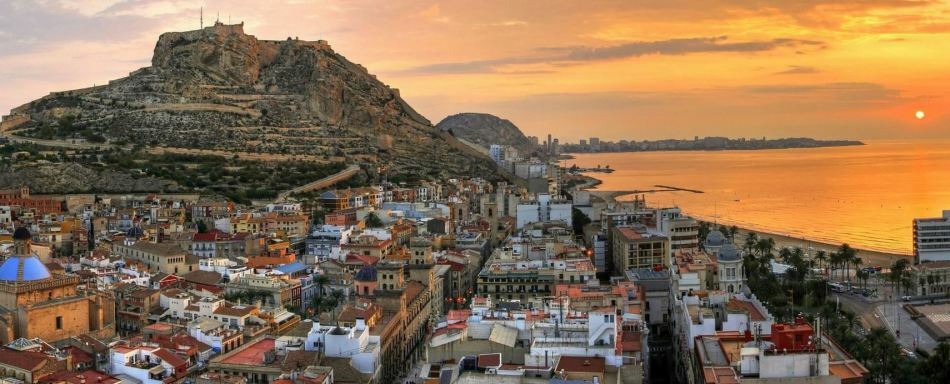
The main attraction of Alicante is Santa Barbara Castle( Castillo de Santa Bárbara) , which is one of the largest historical monuments in Spain. It is located on Mount Benacantil next to the port, and from the walls of the castle offers a stunning panorama of the bay and the city. The fortress is built in tiers, the oldest is the upper storey - built in the 9th century by the Moors on the site of the ancient Greek defenses
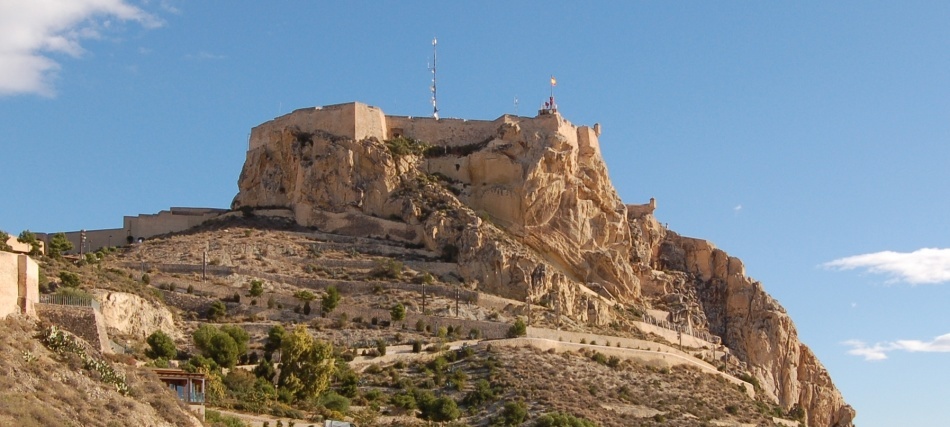 Santa Barbara Castle,on the top of the mountain there is a road and hiking trails. In addition to the fortress on Mount Benacantil, there are restaurants, cafes and a small walking park. Inside the castle, exhibitions of archaeological finds and works of contemporary art are often held.
Santa Barbara Castle,on the top of the mountain there is a road and hiking trails. In addition to the fortress on Mount Benacantil, there are restaurants, cafes and a small walking park. Inside the castle, exhibitions of archaeological finds and works of contemporary art are often held. 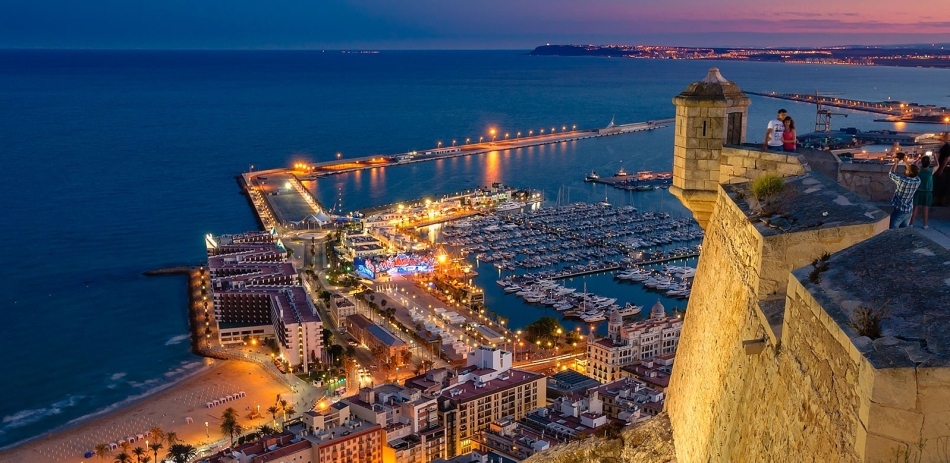 Castle of Santa Barbara( Castillo de Santa Bárbara), Alicante
Castle of Santa Barbara( Castillo de Santa Bárbara), Alicante is located at the foot of Benacantil mountain. Barrio de Santa Cruz is the oldest district of the city, built up in the 13th century and has survived to our days practically unchanged. This is a very picturesque place: cascading houses descending to the sea, snow-white walls and an abundance of flowers are very impressive for tourists. By the shape of the buildings and the decoration of the facades, it is evident that many houses in Santa Cruz were built by Muslims at the time of the reconquest, when the Spaniards recaptured their lands from the Moors, but allowed some of them to live on the outskirts of the city.
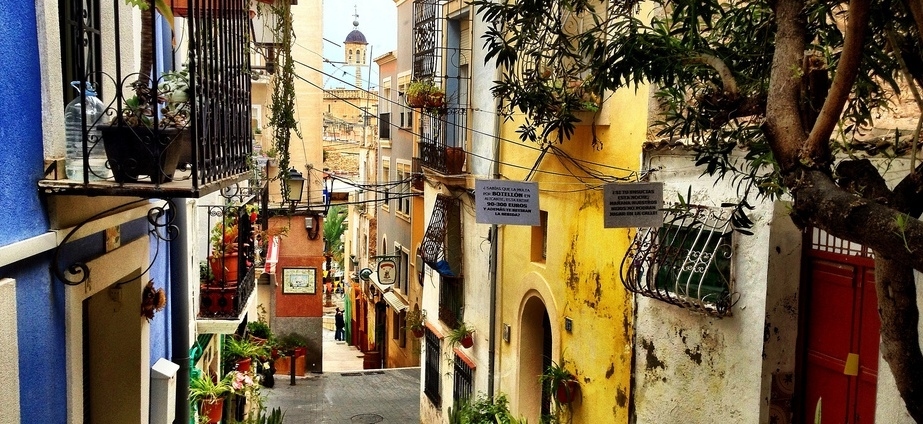 Santa Cruz neighborhood, Alicante
Santa Cruz neighborhood, Alicante Concatedral de San Nicolás is the main Catholic church of the city and one of the most important sights of Alicante. It is located near the Santa Cruz area. The cathedral houses several relics of Catholic saints, as well as an ancient organ of the 11th century.
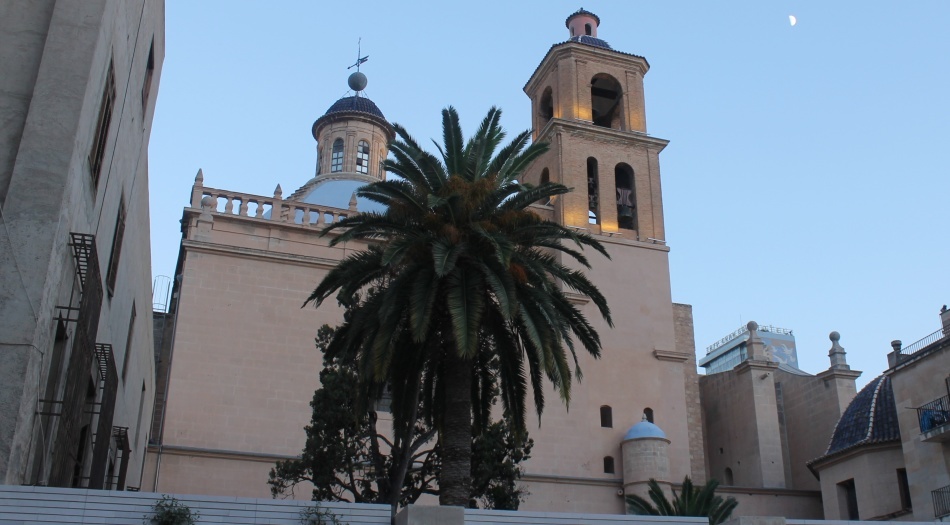 The Concatedral de San Nicolás, Alicante
The Concatedral de San Nicolás, Alicante Castillo de San Fernando The is located in the heart of the city on the hill of St. Francis. It was built in the beginning of the XVIII century for protection from the army of Napoleon, but it was not useful as a defensive structure, since Napoleon turned to Russia. Today, the area around the fortress of San Fernando is equipped with walking alleys, bicycle paths, playgrounds, and is a favorite recreation area for townspeople and visitors.
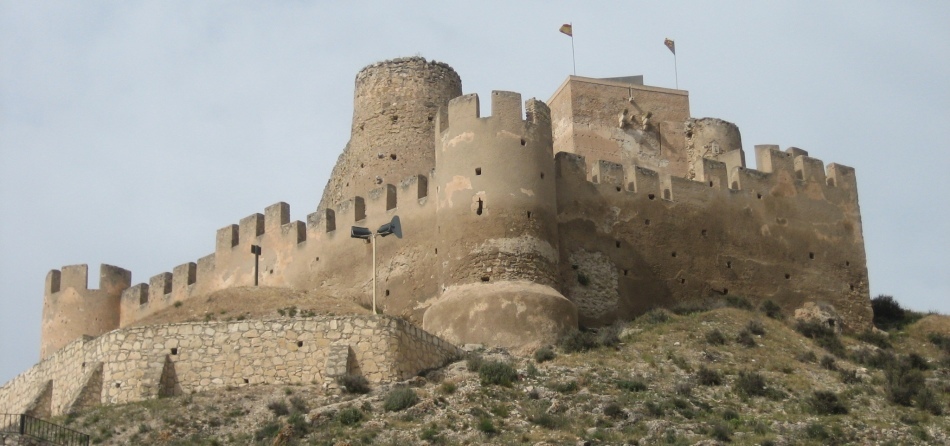 Fortress of San Fernando, Alicante
Fortress of San Fernando, Alicante Church of Santa Maria( Basílica de Santa María) is the oldest church in the city, built in the 16th century on the site of a ruined Muslim mosque in honor of the victory over the Moors. The church is active, therefore it is open for visits only during free time.
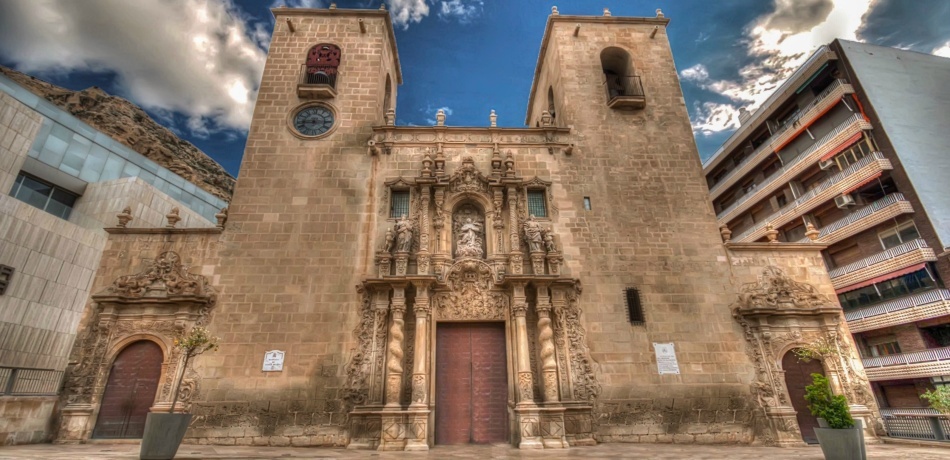 Church of St. Mary( Basílica de Santa María), Alicante
Church of St. Mary( Basílica de Santa María), Alicante Esplanade boulevard( Explanada de España) is the main street of the city and a popular walking area. During the day, everyday life boils here( there are a lot of banks, restaurants on the boulevard, there is a small market and separate trays all along the boulevard), and towards the evening the boulevard is filled with musicians, street actors, artists and many newcomers. The highlight of the boulevard is a mosaic pavement that depicts the sea surf.
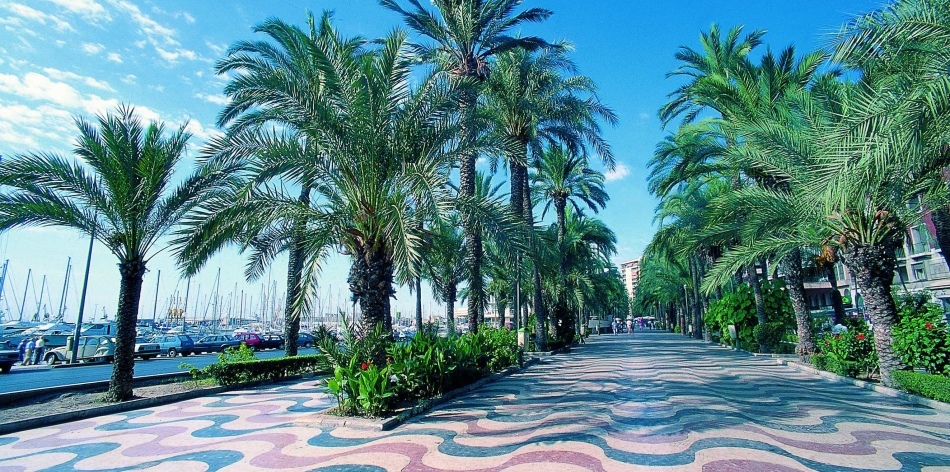 Esplanade boulevard( Explanada de España), Alicante
Esplanade boulevard( Explanada de España), Alicante In the center of the boulevard is a small park called Canazejas( Parque de Canalejas) , which is interesting with age-old trees of huge sizes. There are also playgrounds, flower gardens and small fountains.
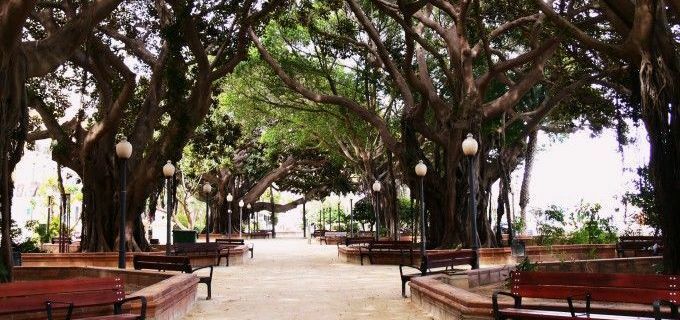 Parque de Canalejas, Alicante
Parque de Canalejas, Alicante Isla Tabarca is a small island near Alicante( 30 minutes by boat).In the Middle Ages, he was chosen by pirates, according to legend, the island still keeps pirate treasures. Still here there are picturesque ruins of the old fortress and many small restaurants serving seafood.
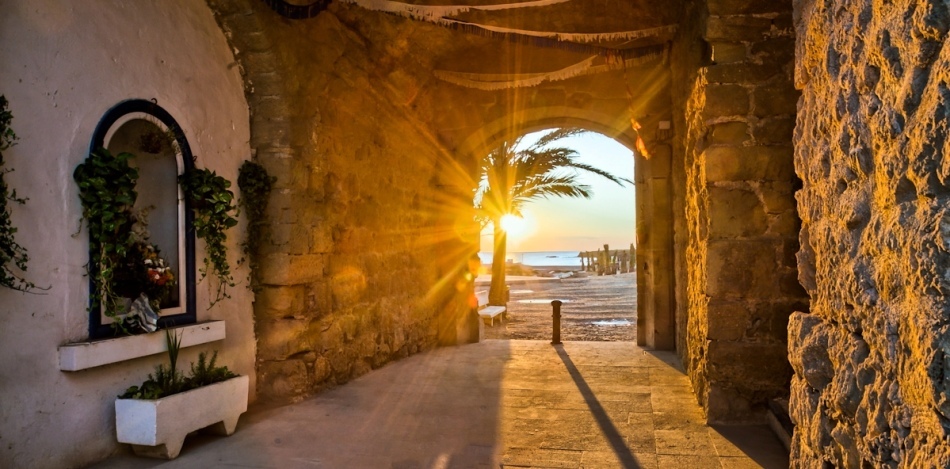 Isla Tabarca
Isla Tabarca Benidorm
Benidorm is the youngest city on the Costa Blanca. The main contingent of holidaymakers here is a cheerful bezbashennaya youth from all over Europe, and the main occupation of holidaymakers is fashionable discos and noisy night parties.
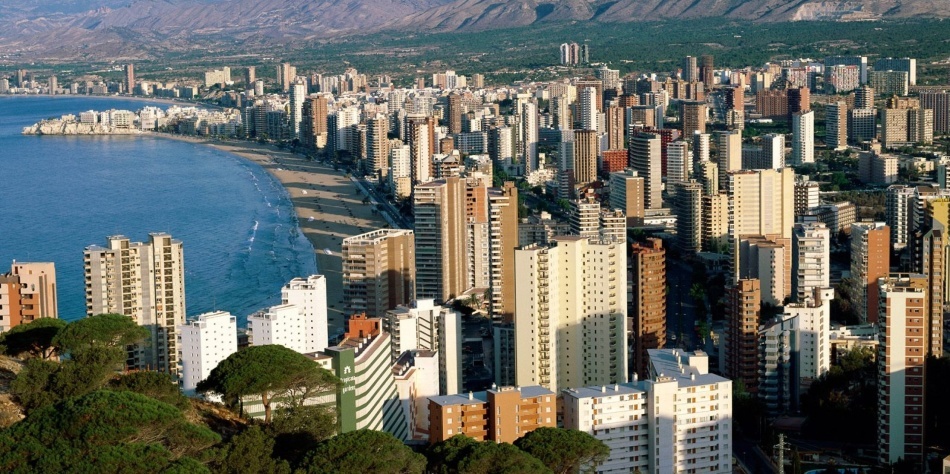
The Old City of Benidorm( Porte Vieja) is a small fishing village, which, in fact, was still 60 years ago. The old part of the city is called Parte Vieja and is famous for its beauty, narrow cobbled streets, cozy small cafes and excellent tapas taste - local national dishes.
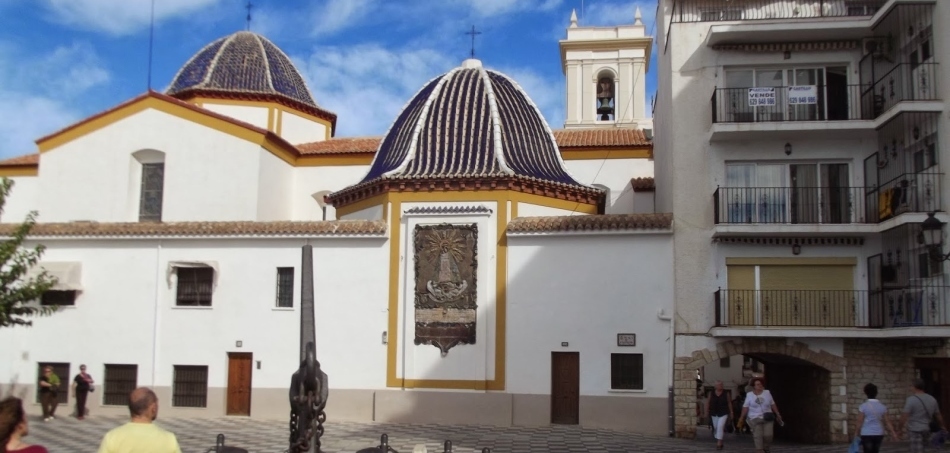 The Old City of Benidorm( Porte Vieja)
The Old City of Benidorm( Porte Vieja) On the outskirts of Porte Vieja is the beautiful old church of Saint Jaime and St. Ana, painted in a characteristic blue-white color.
Terra-Mitika Park
The Terra Mitica amusement park is a themed park decorated in the style of ancient civilizations. In fact, the park is divided into two parts: ancient( Greece, Egypt, Rome) and Iberian( Spanish lands and islands).
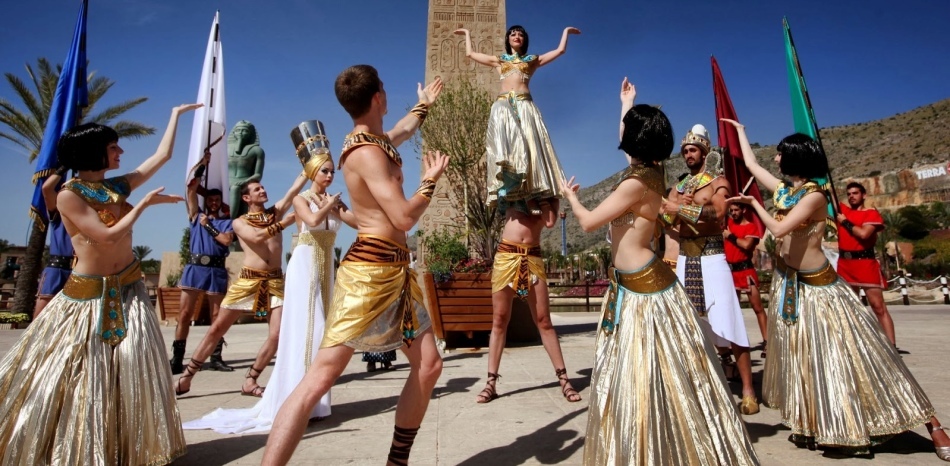 Amusement park Terra Mitica( ASIA)
Amusement park Terra Mitica( ASIA) You can buy an entrance ticket at the ticket office of the park or on the official website. Often there are various promotions and discounts, also in Benidorm, in many restaurants and supermarkets there are special racks where visitors are offered coupons at a discount to visit the park, sometimes discounts on coupons are very significant. The ticket entitles you to stay in the park all day, to use all the attractions free of charge and to attend any shows.
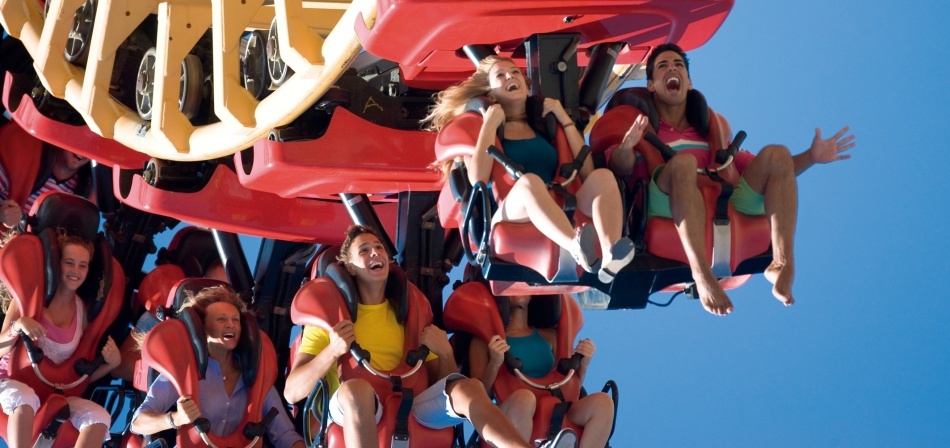 Amusement park Terra Mitica
Amusement park Terra Mitica In the park next to each "adult" attraction is its reduced copy for kids. Unlike other theme parks, you can bring your own food to Terra Mitica, there is a special picnic area where you can refresh yourself with the products brought with you, as well as a lot of cafes and restaurants( mostly fast food) in the park, where for a separateyou will be fed a board with ready meals.
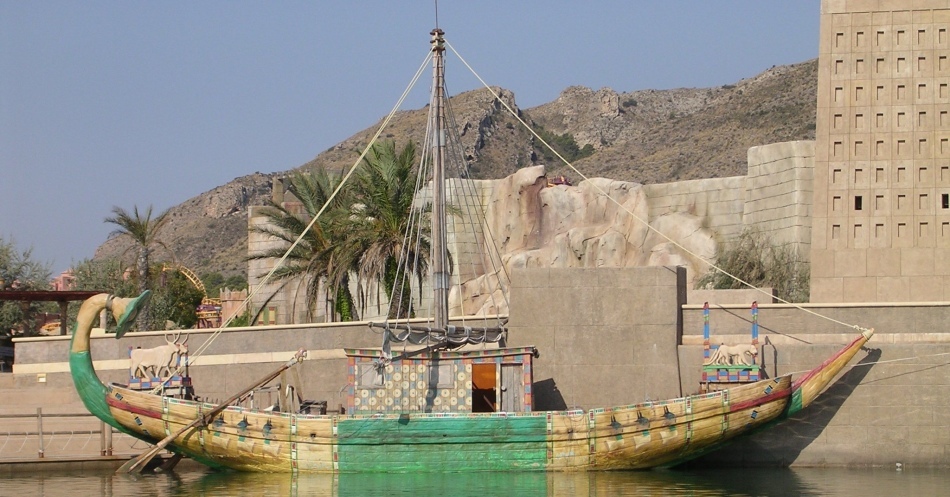 Terra Mitica Amusement Park( Terra Mitica)
Terra Mitica Amusement Park( Terra Mitica) The park is full of surprises. For example, in the zone of ancient Rome, you can pour water venerable patricians on a self-propelled chariot( I must say that the joke is harmless, since water is not poured much, and in the summer heat it is more pleasant than offensive).
 Amusement park Terra Mitica
Amusement park Terra Mitica There are various roller coasters, a very unusual sightseeing wheel, all kinds of carousels and centrifuges, as well as watercrafts and inflatable boats. You can reach the park by public transport, which goes from Benidorm and the surrounding cities.
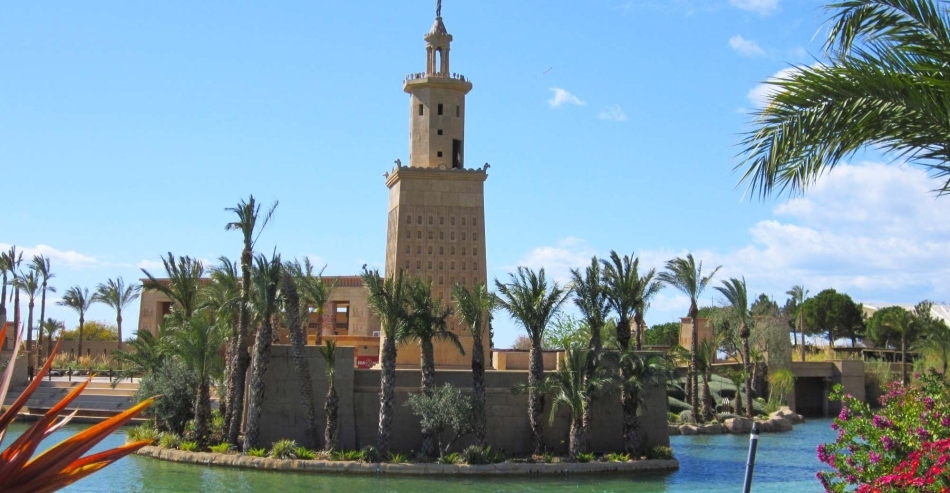 Amusement park Terra Mitica
Amusement park Terra Mitica Aqualandia and Mundomar
Aqualandia Aqua park and Zoo Mundomar are located nearby, so it is more convenient to buy a double ticket to both parks simultaneously, and get a discount.
In the water park there are water attractions and slides for every taste - from the most harmless to the super-extreme. Unlike other water parks, you will have to pay for renting a locker in the locker room, an inflatable lap and a lounger by the pool. The water in the pools and attractions is not fresh, but sea, as the park is located on the seashore. In addition to water activities there is a dolphinarium, where dolphins and fur seals are held daily.
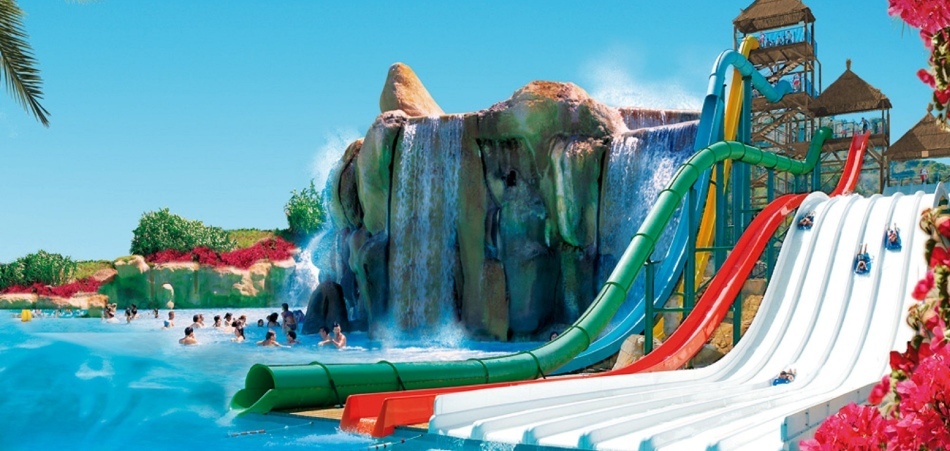 Aqualandia Aqua Park, Costa Blanca
Aqualandia Aqua Park, Costa Blanca The Mundomar Zoo features different animals in their natural habitat, various shows with their participation, and a swim in the swimming pool with dolphins and fur seals. From Benidorm to Aqualandia and Mundomar there are regular buses.
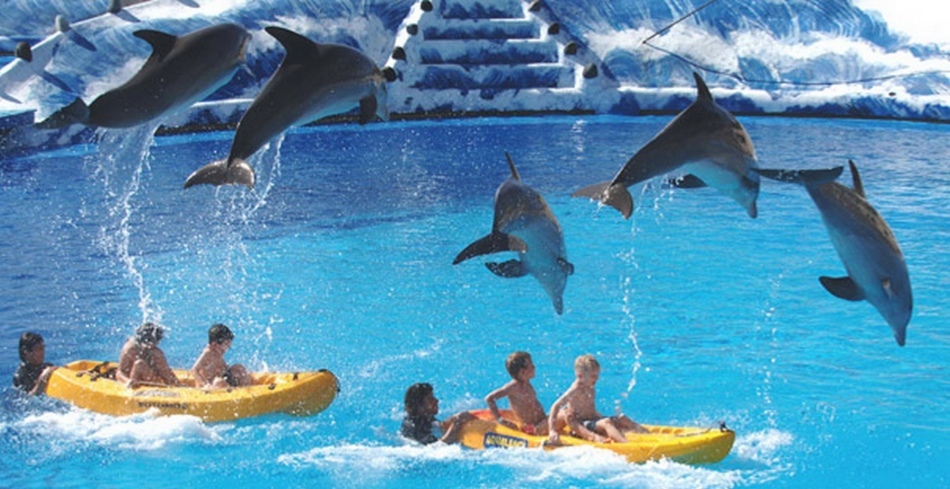 Mundomar Zoo, Costa Blanca
Mundomar Zoo, Costa Blanca Aqua Natura Aqua Park and Terra Natura Zoo
These are two parks in one territory that can be visited on a single ticket. Also, visiting the parks can be combined with Terra Mitica, as it is also located nearby. Parks are spread over a large territory, divided into thematic zones( America, Asia, Europe), in each zone are characteristic for this continent flora, fauna, cuisine and local traditions. From Benidorm to parks there is public transport. Tickets can be bought at the ticket offices of any of the parks( Terra Mitica, Terra Natura, Aqua Natura) and on official parks sites.
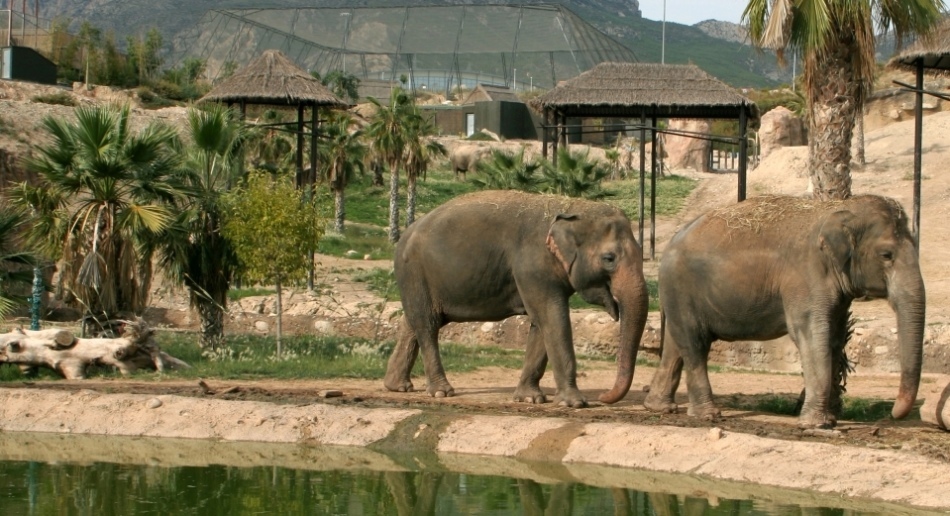 Terra Natura, Costa Blanca
Terra Natura, Costa Blanca Safari park Aitana
Safari park Aitana is located 40 km from Bendiorma, you can get there by car or as part of an organized excursion( sold in the city's street agencies and tour operators).On the territory of the park, animals are literally kept in the wild, so only the window glass of the car separates them from people. Therefore, when going on a rented car, it is necessary to stock up on insurance in case of damage to the machine by hoofs, horns and claws.
In addition to predatory animals in the safari park contain quite harmless species of mammals and artiodactyls, which can be fed from the hands and ironed. Also on the territory of the park there is a cafe, recreation areas, a children's playground.
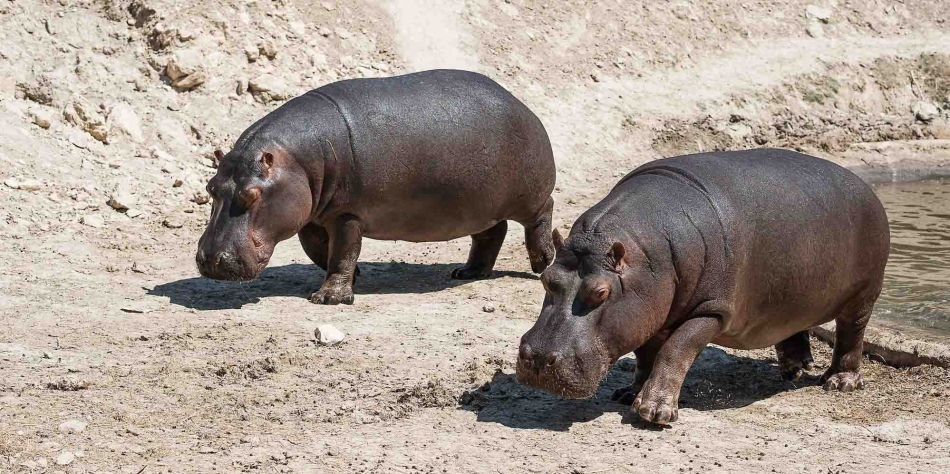 Safari Park Aitana, Costa Blanca
Safari Park Aitana, Costa Blanca Castle of Count Alfas
W Amok Count of Alfaz is a colorful costume show where tourists are immersed in the Middle Ages. There will also be a knight tournament on the war between Moors and Christians, and traditional live lute music, and a real medieval dinner of roast game that you have to eat with your hands, washing down with wine.
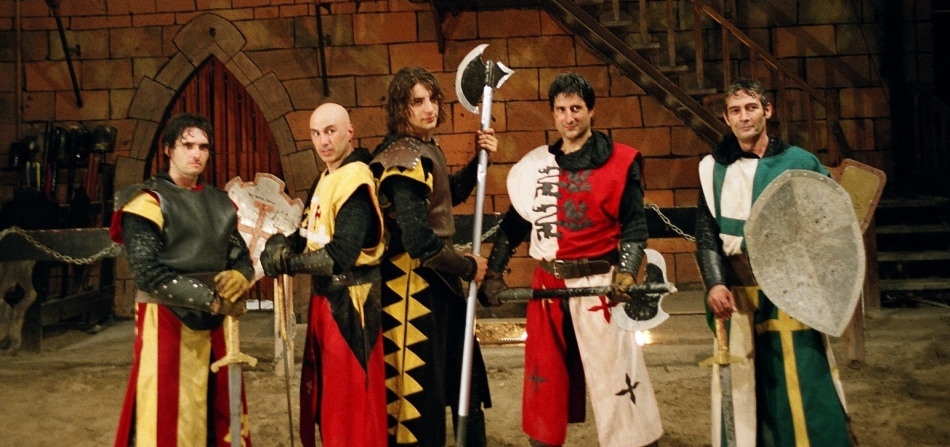 Castle of the Count of Alfaz, Costa Blanca
Castle of the Count of Alfaz, Costa Blanca Guadalest
Guadalest village is a typical mountainous Spanish village that has preserved the way of life and traditions the same as hundreds of years ago. There is an old fortress built in the 11th century, many small but interesting museums telling about the life and customs of the Middle Ages. From Benidorm to Guadalest, a shuttle bus runs.
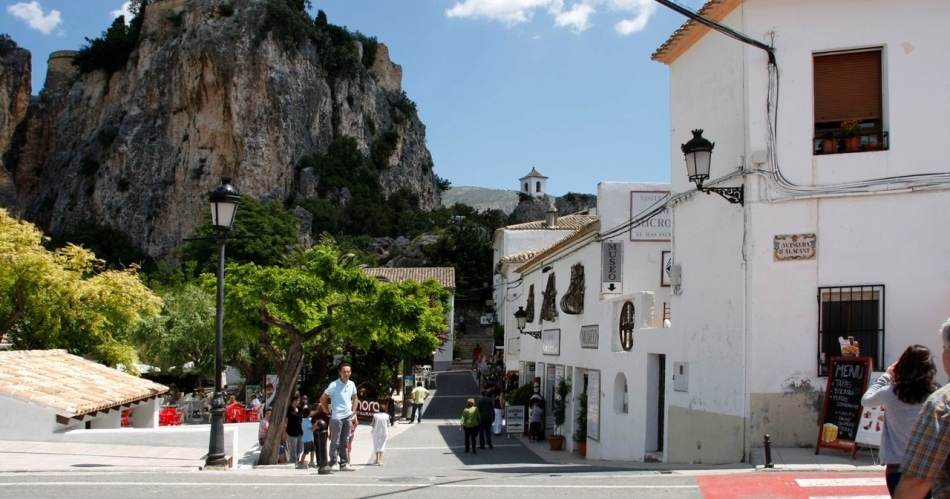 Guadalest, Costa Blanca
Guadalest, Costa Blanca Torrevieja
Torrevieja is a small resort city in the south of the Costa Blanca, which has very affordable prices for accommodation, as well as the largest Russian-speaking community. Due to the fact that there are a lot of immigrants from Russia and the CIS, in local cafes and shops Russian-speaking staff is not uncommon, unlike other resort cities in Spain.
 Torrevieja, Costa Blanca
Torrevieja, Costa Blanca Among the attractions in Torrevieja is the old city church , park Parc de las Naciones in the center of the city, The sea and salt museum , the military museum on the submarine S-61 Delfin, aquapark Aquapolis and the natural park of the salt lagoon La Mata , the waters of which are painted in an unusual pink color, and from the inhabitants you can find rare flamingos in their natural habitat. Also in the salt lakes lagoons can be swim, because the chemical composition of the water is close to the waters of the Dead Lake in Israel and with the right approach it has a health-improving effect on the body.
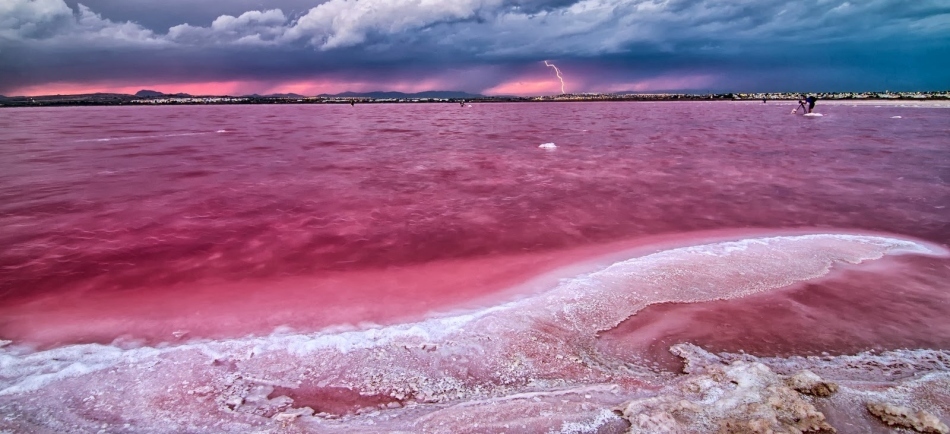 Salt Lake Lagoon Park La Mata, Torrevieja, Spain
Salt Lake Lagoon Park La Mata, Torrevieja, Spain Gandia
Gandia is a small fishing town in which Europeans prefer to rest, many of them rent villas and private apartments, although there are a lot of hotels in Gandia. It is a quiet, quiet resort with a measured life and mild climate. The beaches here are wide and gently sloping, ideal for relaxing with children and leisurely walking many kilometers along the sea.
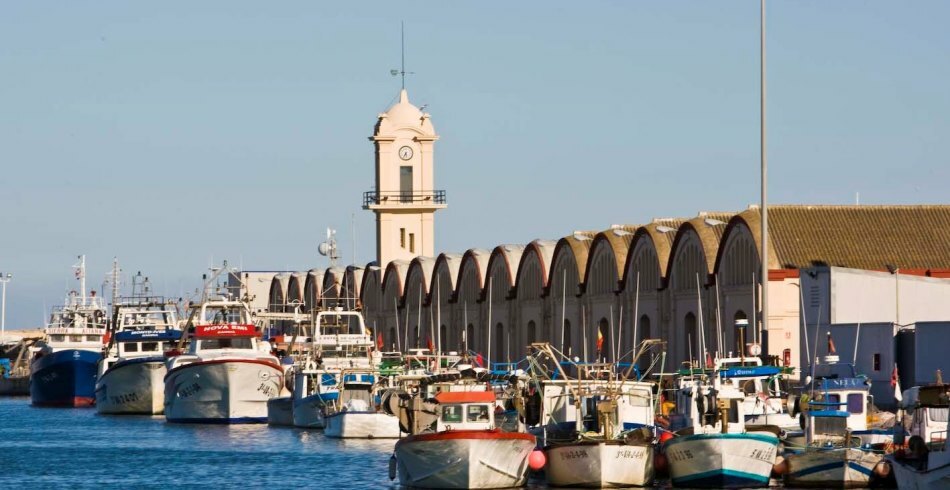 Gandia, Costa Blanca
Gandia, Costa Blanca Local landscapes very enliven the orange gardens, which at any time of the year either bloom, fill all around with a heady aroma, or bear fruit, and then all the surrounding hills adorn bright orange peas from ripe fruits.
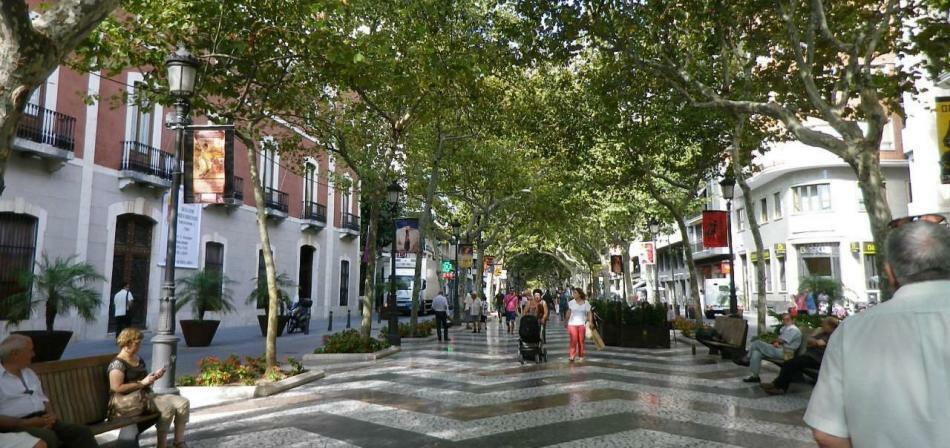 Gandia, Costa Blanca
Gandia, Costa Blanca The main attraction of the city is Palau Ducal del Borja - an ancient noble family, the richest family in Aragon, whose name became synonymous with insidiousness and debauchery, although among the numerous representatives of the genus there were also the righteous, officially counted as saints. The palace is the largest and most luxurious historical construction of such a plan in the whole of Valencia.
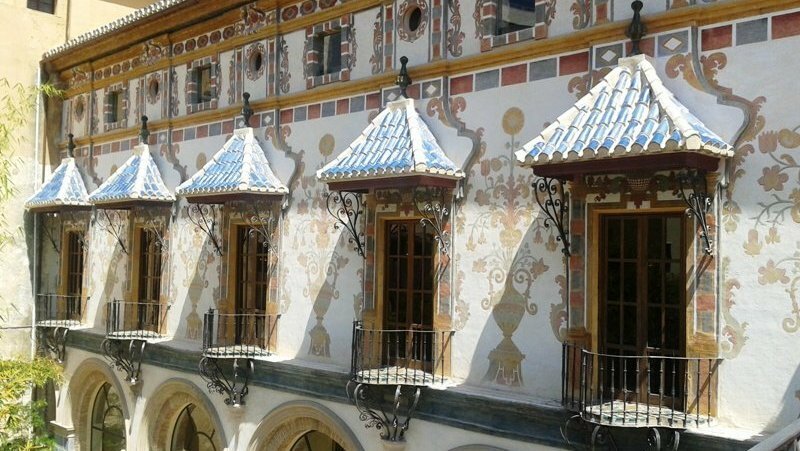 Castle of Borgia, Gandia, Costa Blanca
Castle of Borgia, Gandia, Costa Blanca Denia
Denia is a small and very quiet city, the only attraction of which is the ruins of a Moorish castle, except for excellent sandy beaches and cozy rocky bays.
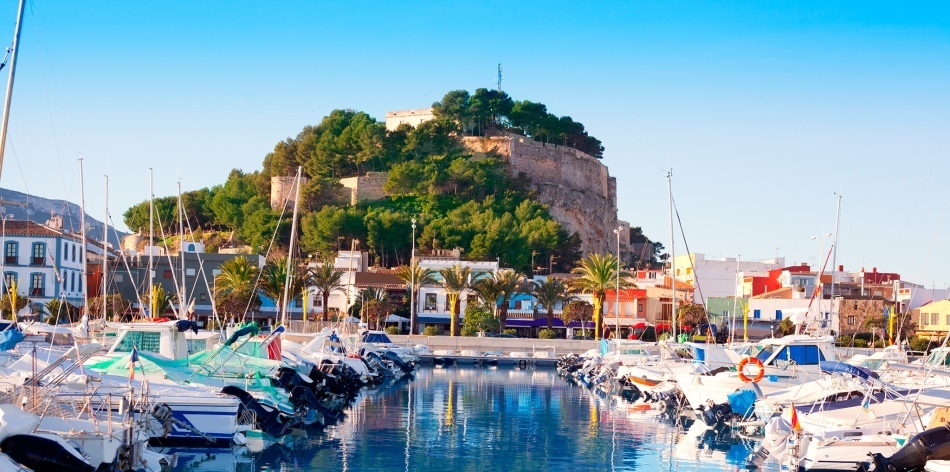 Denia, Costa Blanca
Denia, Costa Blanca Altea
Thanks to its picturesque landscapes, Altea is very popular with painters and artists of various colors who rest here every summer and give the city atmosphere a bohemian connotation. The most interesting objects of Altea are the charming old part of the city, which keeps traces of Phoenicians and Moors, as well as the Orthodox Church of St. Michael, located on the hill, is the only Orthodox church in all of Spain.
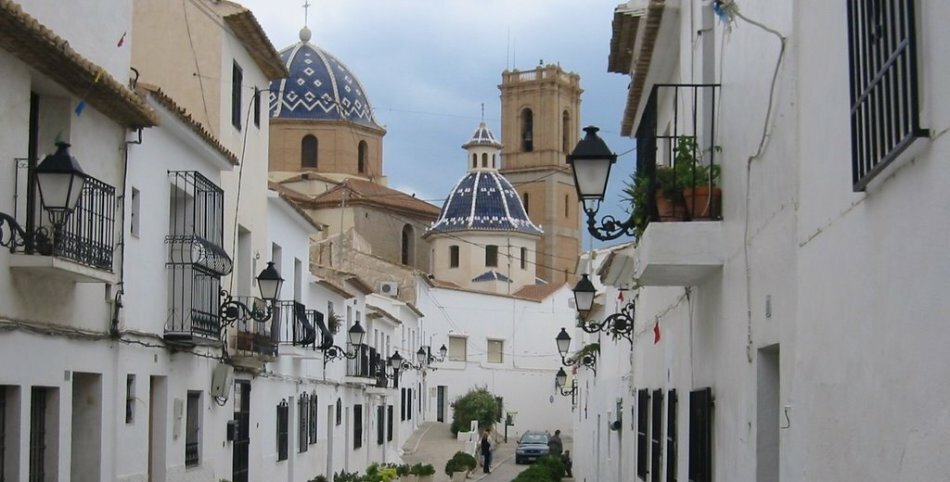 Altea, Costa Blanca
Altea, Costa Blanca Calpe
Calpe( Kalpe) is a city that combines a rich history from the first settlements of BC and modern avenues with skyscrapers of steel and concrete. There are excellent conditions for practicing water sports, and sandy beaches attract tourists with its cleanliness and comfort. Also, Calpe is famous for its seafood and fish restaurants - some of the best on the whole coast.
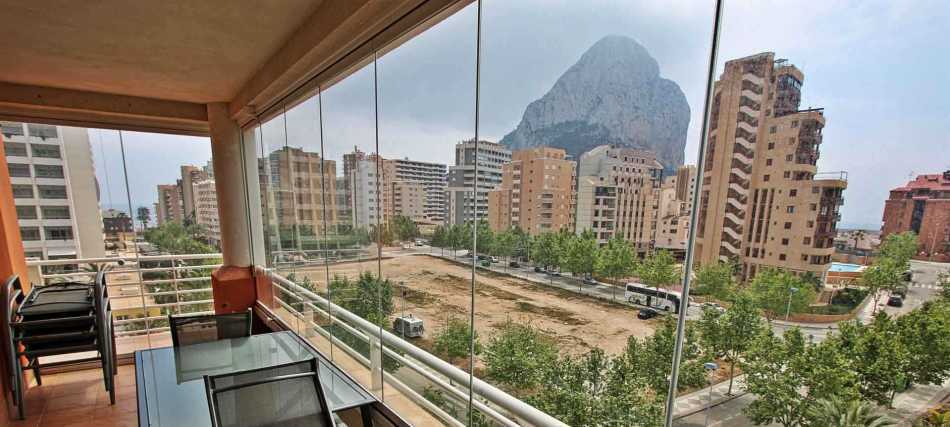 Kalpe, Costa Blanca
Kalpe, Costa Blanca In Calpe, there is the rock Ifach, which is the visiting card of the coast of Costa Blanca and is often depicted on guidebooks and tourist booklets. At the foot of the cliff there is a natural natural park with unique inhabitants, natural hiking trails and rare plant species.
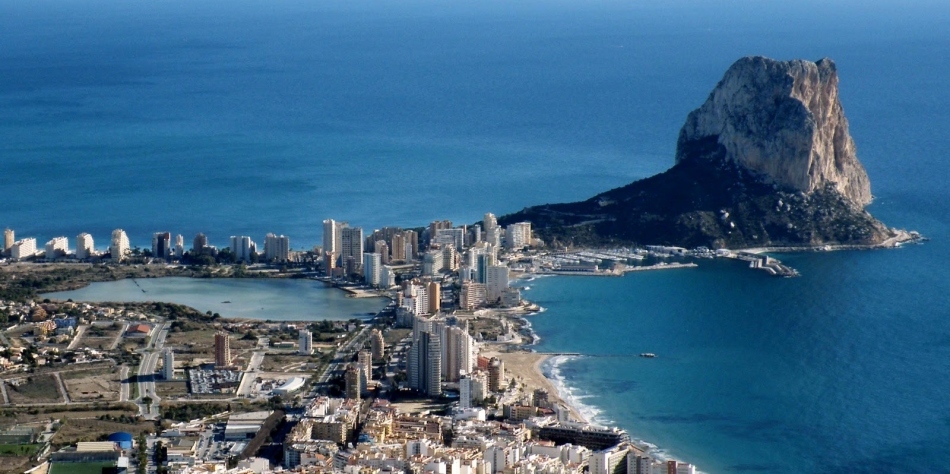 Rock of Ifach, Calpe, Costa Blanca
Rock of Ifach, Calpe, Costa Blanca The salt valleys of Calpe are a unique natural habitat for pink flamingos and royal heron, and a source of salt production that has always been considered "white gold" and has provided the residents of Calpe with prosperity and income.
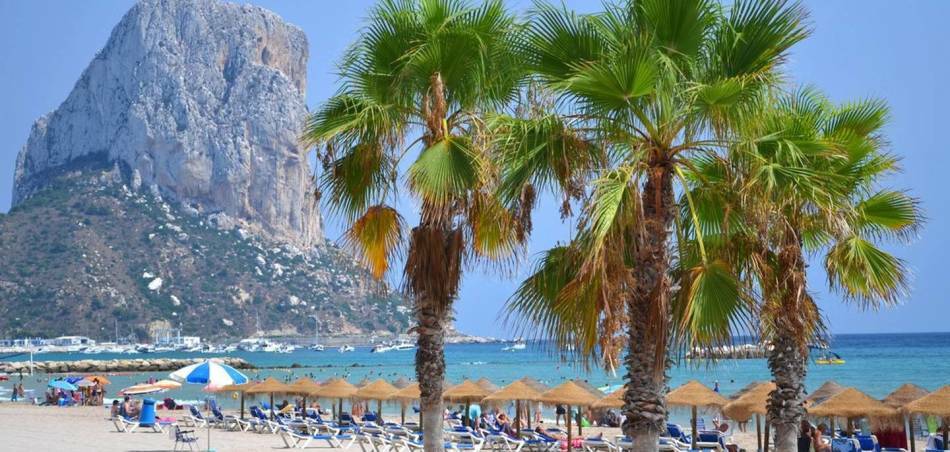 Calpe, Costa Blanca
Calpe, Costa Blanca Javea
Javea / Xabia is considered to be the warmest resort in the whole of Spain, thanks to the mountain range of Mongo, which protects it from the cold north winds at any time of the year. Javea is located on a promontory far out to sea, directly opposite the island of Ibiza, which in sunny weather is visible from Javea with the naked eye. In local restaurants you can try a real Spanish paella, and not its modest counterpart, which is served in most major tourist cities. Javea is very popular for relaxing with romantic couples, as well as fans of windsurfing and other water sports.
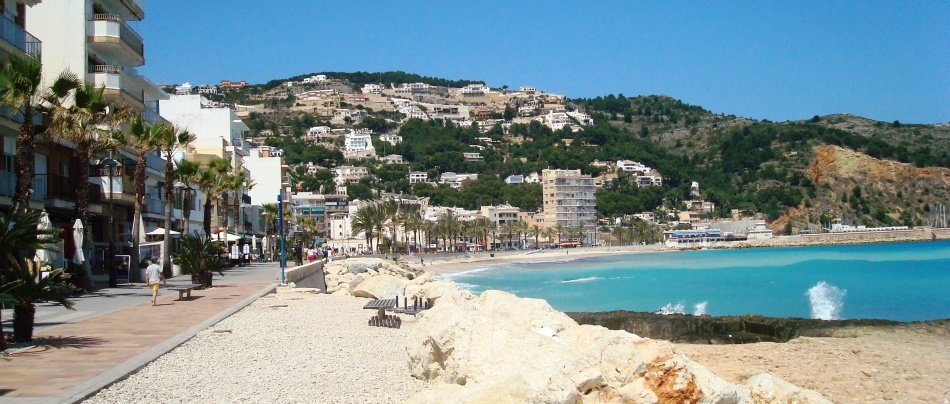 Javea / Xabia, Costa Blanca
Javea / Xabia, Costa Blanca Villajoyosa
Villajoyosa is the most non-tourist city in the entire Costa Blanca. There are very few hotels here, and the main income for residents is not the tourism industry, but fishing and crafts. However, this does not mean that the city is not at all attractive as a place for recreation.
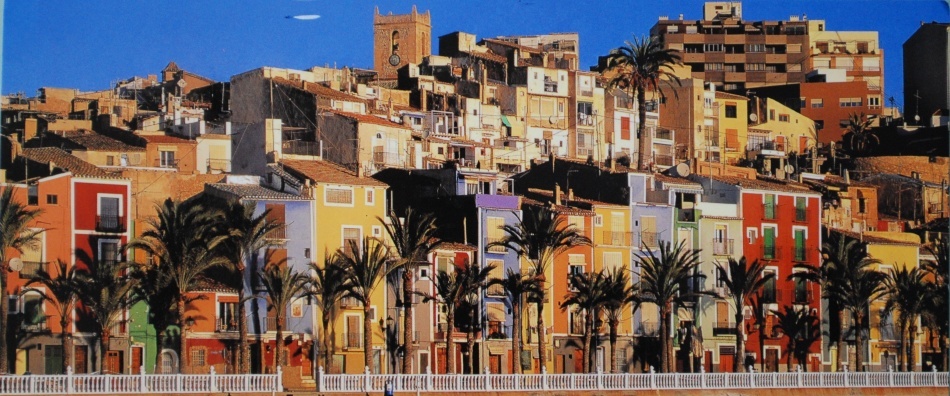 Villajoyosa( Villajoyosa), Costa Blanca
Villajoyosa( Villajoyosa), Costa Blanca Villajoyosa has a very ancient history - ancient than many coastal towns. There are chic beaches: wide, clean, well-equipped and not too crowded. In the vicinity of Villajoyosa there are two excellent lagoons for diving.
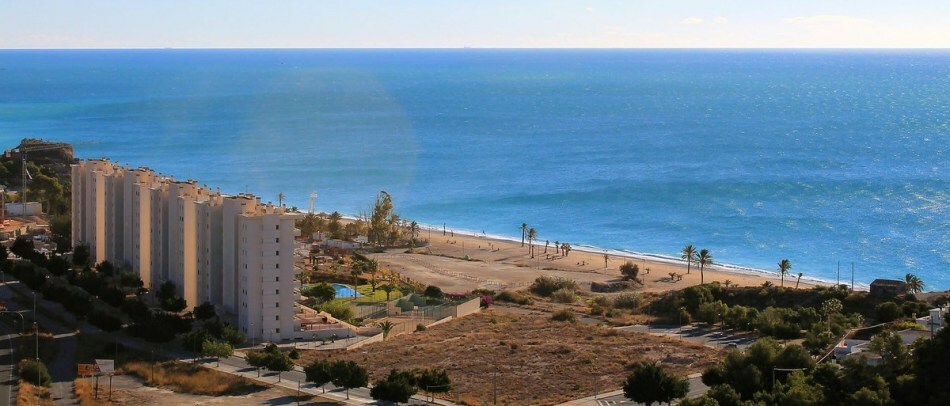 Villajoyosa, Costa Blanca
Villajoyosa, Costa Blanca Villajoyosa streets have a completely unique and unique view, thanks to the manner of local residents to paint houses in bright and colorful colors. By the way, from the Spanish Villajoyosa is translated as "the city of joy", which fully justifies its hilarious coloring. Also, Villajoyosa is known as the chocolate capital of Spain, as there are a long tradition of making this product, and currently produce the most famous brand of Valor chocolate in the country.
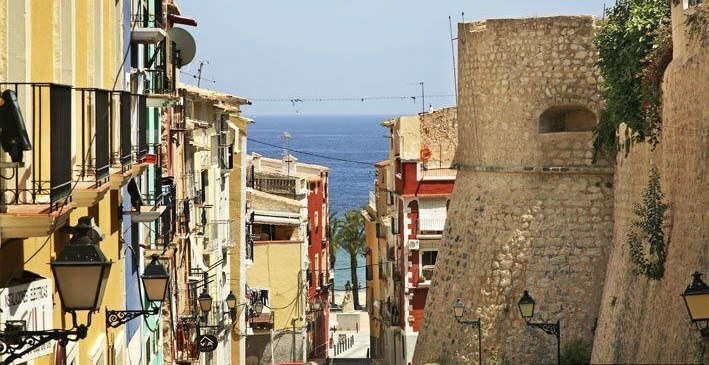 Villajoyosa, Costa Blanca
Villajoyosa, Costa Blanca From historical sights Villajoyosa can boast of the ruins of an ancient fortress, several museums of chocolate, the old Catholic church, the funerary tower of Hercules( the legacy of the Roman rulers of the city).
